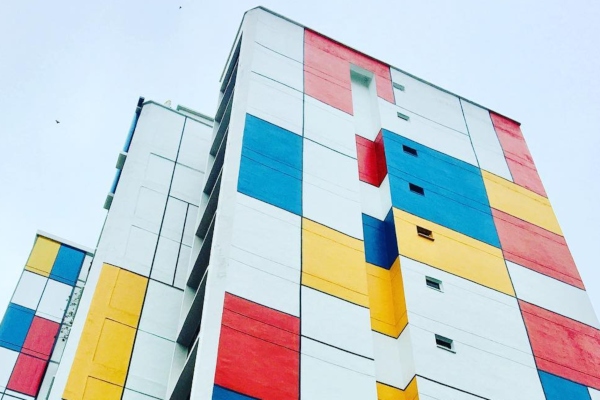We’ve got quite a collection of impressive national monuments, some of which are actually hidden in plain sight!
[dropcap]D[/dropcap]o you know how many national monuments there are in Singapore? The National Heritage Board has gazetted a total of 70 buildings and structures – and you might be passing them by every day without even knowing!
These architectural wonders are preserved for their significant value in Singapore’s history. Will any of them catch you by surprise?
1. The Cathay
Gazetted in: February 2003

And you thought this was just another mall where all the cool kids hang out. The hipsters have good taste – the Cathay is in fact Singapore’s very first skyscraper, and at that time the tallest building in Southeast Asia. It was also the first public building in Singapore to be air-conditioned.
The 17-storey building housed the flagship 1,300-seat Cathay cinema, inaugurated by Loke Wan Tho with the screening of A Korda’s The Four Feathers (1939). At the start of the Japanese invasion, the British Malaya Broadcasting Corporation transmitted updates on the progress of the war from the Cathay.
2. Lau Pa Sat (formerly Telok Ayer Market)
Gazetted in: June 1973

The watering hole of the commercial district, Lau Pa Sat is Singapore’s oldest market. It was originally located on the bank of the Singapore River, but was relocated to Telok Ayer, where it has remained since 1824.
The ornamental columns at the entrance were built with the goal to make Lau Pa Sat a landmark. The market passed through the hands of multiple Caucasian commissions, forming its iconic ornate design.
3. Chinese High School Clock Tower Building
Gazetted in: March 1999

The clock tower in what is now Hwa Chong Institution has remarkable significance in Singapore’s history. Founded in 1919, it was used as an observation post during World War II by the British forces during their defence of Singapore.
The building is decked out in neo-classical architecture, and the two-storey tower annex provides a sweeping vantage point of the Bukit Timah area.
4. Ying Fo Fui Kun
Gazetted in: December 1998

Ying Fo Fui Kun is a clan association founded in 1822 by Hakka immigrants from Guangdong, China. You may recognise its clan house by its traditional oriental entrance that sticks out conspicuously among the shophouses of Telok Ayer Street.
The clan has served the Hakka community since 1822, and continues to promote Hakka heritage and identity through scholarships, language classes and festivals.
5. St James Power Station
Gazetted in: November 2009

Many have come to associate St James Power Station with vibrant nightlife, but the building isn’t just steeped in booze and house music. Built in 1926, it is Singapore’s first municipal power station, generating electricity for the Telok Blangah district until the 1970s.
St James Power Station is the epitome of a colonial industrial building, with its signature triple-level arched windows, red brick exterior, balconies and immaculate craftsmanship. Look a little closer for these details the next time you hit St James for a wild night!
6. Esplanade Park Memorials
Gazetted in: December 2010

The Esplanade Park on Connaught Drive is home to three notable monuments – can you spot them all?
The Tan Kim Seng fountain is a fine 19th-Century cast-iron fountain, featuring four Muses in the lower bowl: Calliope holding a book or a writing tablet; Clio holding a scroll; Erato holding a lyre and Melpomene holding a garland. It’s a work of art you’d expect to find in a manicured French garden.
The Cenotaph is Singapore’s first military commemorative structure that honours individuals who perished in World Wars I and II. The memorial bears bronze tablets with an inscription, “To Our Glorious Dead”. Crowning the Cenotaph is a bronze medallion symbolising the Colony of Singapore.
Finally, the Lim Bo Seng memorial – named in honour of a heroic member of the resistance and prisoner of war during the Japanese Occupation – is a significant piece of Chinese National architecture. It features four bronze plaques with text in English, Chinese, Tamil and Jawi, illustrating Lim Bo Seng’s life.
Who knew that our little crowded city concealed so many important monuments entrenched in rich history? We should keep our eyes open for these wonders of our nation!
What other buildings and structures are also national monuments in Singapore? Find out here!
By Pamela Chow
ADVERTISEMENTS










Leave a Reply